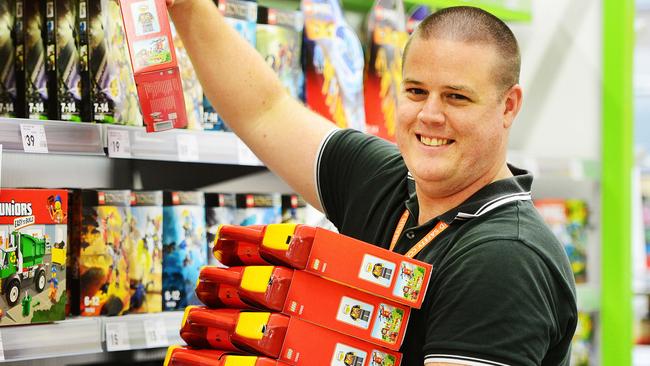Wesfarmers planned merger of Target, Kmart slammed in report
Target is tipped to drag down star performer Kmart as a merger move threatens disruptions and a cost blowout.

Target is tipped to post losses of more than $150 million by 2018, dragging down star performer Kmart with it, as Wesfarmers’ decision to turn the once fierce retail competitors into a merged operation triggers a cost blow out of hundreds of millions of dollars and causes a major disruption to both businesses.
A new report from Bank of America Merrill Lynch analyst David Errington argues Wesfarmers might have also underestimated customer loyalty to the different brands and cultures of Target and Kmart, with the biggest winner from the merger arch rival Big W, where disillusioned Target customers could migrate to.
Mr Errington has also cast doubt on the level of earnings Wesfamers (WES) will reap from its $704 million acquisition of UK hardware chain Homebase in January, saying it will not deliver acceptable returns for shareholders. He adds that a British exit from the European Union in June could be a material risk to the Homebase business.
His scathing report downgrades Wesfarmers’ forecast earnings by 2 per cent in fiscal 2016, 5 per cent in 2017 and 6 per cent by 2018.
Mr Errington lays the blame for the expected slide in the Perth-based conglomerate’s earnings momentum on the decision earlier this year to fuse struggling Target with earnings powerhouse and Wesfarmers stablemate Kmart.
“Over the past five years, Target’s EBIT has fallen by $291 million and Kmart’s EBIT has increased by $236 million. The recovery at Kmart has been at the cost of Target’s earnings contribution,’’ Mr Errington said in his report.
“Now, as fierce rivals, Wesfarmers is looking to merge both businesses under Kmart management (that led a strategy that saw Target’s earnings fall nearly 80 per cent).’’
Last Week Wesfarmers also announced the planned closure of Target’s head office in Geelong, moving it to a new location in Melbourne, with the loss of around 20 per cent of staff.
“We see closing Geelong, and moving Target’s offices to a location some distance from Kmart’s offices as being costly and disruptive to the business. Closing offices, exiting staff, and rehiring could cost many hundreds of millions of dollars,” the report says.
“We saw when Coles relocated its liquor business from Sydney to Melbourne, the sales and earnings of liquor fell heavily after the majority of management left.’’
The move will also hurt Kmart’s earnings, Mr Errington said, and he has trimmed Kmart’s pre-tax earnings by $25 million in 2017 and $30 million in 2018.
But the biggest victim of the merger will be Target, claims Mr Errington. The outspoken analyst has cut his forecast earnings for Target materially by $154 million in fiscal 2017 and by $211 million in fiscal 2018.
“We now expect Target to generate losses in fiscal 2017 and fiscal 2018 — whereas previously we had forecast the business to contribute just over $100 million in both years,’’ Mr Errington said.
This month an accounting scandal at Target revealed the retail chain had used improper supplier payments to pump up its December half earnings by as much as 40 per cent to $74 million, up from $70 million, when in fact the real profit for the half was a slide to $53 million.
Mr Errington argues Target’s earnings will dive to a loss of $52 million next year and a loss of $100m in 2018.
“We are sceptical toward Target and Kmart being able to share joint services. The two businesses have spent six years trying to differentiate themselves and competing with each other.
“To attempt a merger where both businesses have operated under different management styles and systems is likely to be onerous.
“To highlight an example, merging payroll systems, buyer arrangements, salary and seniority levels could cause material disruption to a business where focus could be lost and sales and earnings suffer.’’
He argues Big W, owned by Woolworths, could win from the merger as customers shift their loyalty to Big W, which Mr Errington believes to be a closer format to Target than Kmart.
The spill-on effect to Wesfarmers has seen the analyst predict the company to generate net profit of only $2.36 billion in 2017, which is 3 per cent lower than the profit generated in 2015 and is beneath what the company generated in 2014 by 2 per cent.



